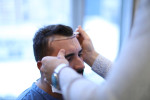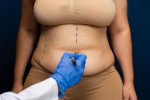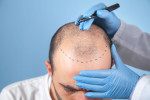Introduction
Facelift surgery is also known as rhytidectomy. It effectively rejuvenates facial appearance by tightening skin and reducing signs of ageing. However, successful outcomes significantly depend on proper post-operative care. Knowing essential facelift recovery tips helps patients recover comfortably, ensures lasting results, and reduces potential complications. This comprehensive guide provides valuable tips. These will enhance your recovery journey following facelift surgery.
Facelift Recovery: What to Expect
Immediately after facelift surgery, patients commonly experience swelling, bruising, and mild discomfort. Understanding these typical post-operative symptoms ensures realistic expectations and effective recovery management. Generally, significant healing occurs within two weeks. But ,complete recovery can extend for several months as tissues settle into their new positions.

Essential Facelift Recovery Tips
Implementing specific recovery practices significantly accelerates healing and improves surgical outcomes. Here are key tips for effective facelift recovery:
1. Follow Your Surgeon's Instructions
Strict adherence to your surgeon's guidelines is crucial. Follow advice regarding medication use, wound care, activity limitations, and dietary recommendations precisely. Clear instructions minimise risks and optimise healing.
2. Manage Swelling and Bruising Effectively
Swelling and bruising are common but manageable:
- Use cold compresses or ice packs in the initial days post-surgery.
- Elevate your head while sleeping to reduce swelling.
- Avoid salty foods that increase fluid retention.
3. Maintain Proper Wound Care
Keeping incisions clean prevents infection:
- Follow detailed wound care instructions from your surgeon.
- Avoid touching or scratching the incision sites unnecessarily.
- Attend follow-up appointments for wound assessments and stitch removal.
4. Rest and Limit Physical Activity
Adequate rest is essential during initial recovery:
- Limit strenuous activities, heavy lifting, or vigorous exercise for several weeks.
- Gradually reintroduce mild activities such as walking to boost circulation and healing.
5. Adopt a Nutritious Diet
Nutrition significantly influences recovery:
- Consume balanced meals rich in protein, vitamins, and antioxidants to support healing.
- Stay well-hydrated by drinking plenty of water.
- Avoid alcohol and excessive caffeine, which can impede recovery.
6. Protect Your Skin from Sun Exposure
Protecting your healing skin is vital:
- Limit sun exposure and wear a wide-brimmed hat when outdoors.
- Apply gentle, surgeon-approved sunscreen once permitted.
- Sun protection minimises scarring and supports smoother skin texture.
7. Use Gentle Skincare Products
Choosing the right skincare products enhances recovery:
- Select hypoallergenic, fragrance-free products to avoid skin irritation.
- Consult your surgeon before applying topical treatments or creams post-surgery.
8. Manage Pain Responsibly
Pain management improves comfort:
- Take prescribed pain medication precisely as directed.
- Avoid self-medication or mixing medications without consulting your surgeon.
- Report persistent or severe pain to your healthcare provider immediately.
9. Stay Patient and Positive
Emotional health significantly impacts recovery:
- Maintain realistic expectations about healing timelines.
- Engage in relaxing activities, such as meditation or reading, to reduce stress.
- Understand that minor setbacks or emotional fluctuations are normal.
10. Arrange Reliable Support
Having support greatly aids recovery:
- Arrange for a friend or family member to assist with daily tasks initially.
- Ensure reliable transportation for medical follow-ups.
- Join online or local support groups for additional emotional encouragement.
Common Mistakes to Avoid During Facelift Recovery
Awareness of common pitfalls ensures smoother healing:
- Avoiding your surgeon’s advice.
- Engaging in intense activities too soon.
- Ignoring abnormal symptoms like excessive swelling, bleeding, or infection signs.
When to Contact Your Surgeon
Prompt communication with your surgeon is essential if you experience:
- Persistent bleeding or severe swelling.
- Signs of infection, including fever, redness, or unusual discharge.
- Unrelieved pain despite medication.
Early detection and management of complications improve recovery outcomes significantly.
Long-Term Maintenance for Lasting Results
Facelift results can last a decade or more with proper care:
- Maintain a consistent skincare regimen tailored to your skin type.
- Continue to protect your skin from sun damage.
- Schedule regular check-ups to monitor long-term results and address ageing concerns proactively.
Benefits of Effective Facelift Recovery
Properly managed recovery offers numerous long-term benefits:
- Reduced scarring and faster healing.
- Optimal and longer-lasting aesthetic results.
- Enhanced overall satisfaction and emotional well-being.
Combining Procedures for Enhanced Results
Patients often combine facelifts with additional cosmetic procedures for optimal rejuvenation:
- Eyelid surgery (blepharoplasty) addresses drooping eyelids.
- Brow lifts help smooth forehead wrinkles.
- Dermal fillers restore facial volume and contour.
Importance of Follow-up Appointments
Regular follow-up visits ensure successful recovery:
- Surgeons monitor progress and healing.
- Adjustments or additional treatments may be recommended.
- Early detection of potential complications or irregularities.
Understanding Emotional Recovery
Emotional recovery is just as important as physical healing:
- Be prepared for emotional fluctuations during recovery.
- Seek emotional support from professionals or support groups if needed.
- Maintain realistic expectations to positively influence emotional well-being.
Preparing Your Recovery Environment
Before your surgery, ensure your home environment supports your recovery. Arrange your sleeping area to keep your head elevated comfortably. Prepare easy-to-access supplies, such as medications, snacks, and water, close to your resting place. Keep your phone, chargers, books, or entertainment within reach. A well-prepared recovery environment reduces stress and promotes effective healing.
Gentle Exercise for Improved Healing
Incorporating gentle, physician-approved exercises into your routine can significantly improve recovery. Short, leisurely walks encourage blood circulation, reducing swelling and preventing complications. Gentle stretching or neck exercises, if recommended by your surgeon, can also prevent stiffness. Always follow your surgeon's guidance on when and how to reintroduce physical activity.
Hydration and its Role in Recovery
Maintaining proper hydration is crucial during your facelift recovery. Adequate fluid intake supports tissue regeneration, aids in flushing out toxins, and helps minimise swelling. Drinking plenty of water or herbal teas enhances overall comfort and speeds the healing process. Avoid sugary beverages or excessive caffeine, as they may impede hydration and healing.
Conclusion
Following essential facelift recovery tips ensures a smoother healing process and maximises surgical results. Adhere to post-operative instructions and manage your symptoms responsibly. If you maintain realistic expectations, patients can significantly enhance their recovery experience. Effective recovery planning and care provide lasting, rewarding outcomes, allowing patients to enjoy rejuvenated appearances and renewed confidence for years to come.
For more information on facelift surgery and to book a consultation visit the ACIBADEM Beauty Center Face Lift webpage.
Frequently Asked Questions
Typically, patients can return to work within two weeks, depending on their individual healing progress.
Scars are usually discreet, hidden in natural hairlines or facial contours, and gradually fade over time.
Mild discomfort and soreness are common initially but can be effectively managed with prescribed pain medication.
Cold compresses, elevated head positioning, proper hydration, and dietary adjustments significantly reduce swelling.
Initial results appear after a few weeks, but the final, settled appearance typically emerges within three to six months.












